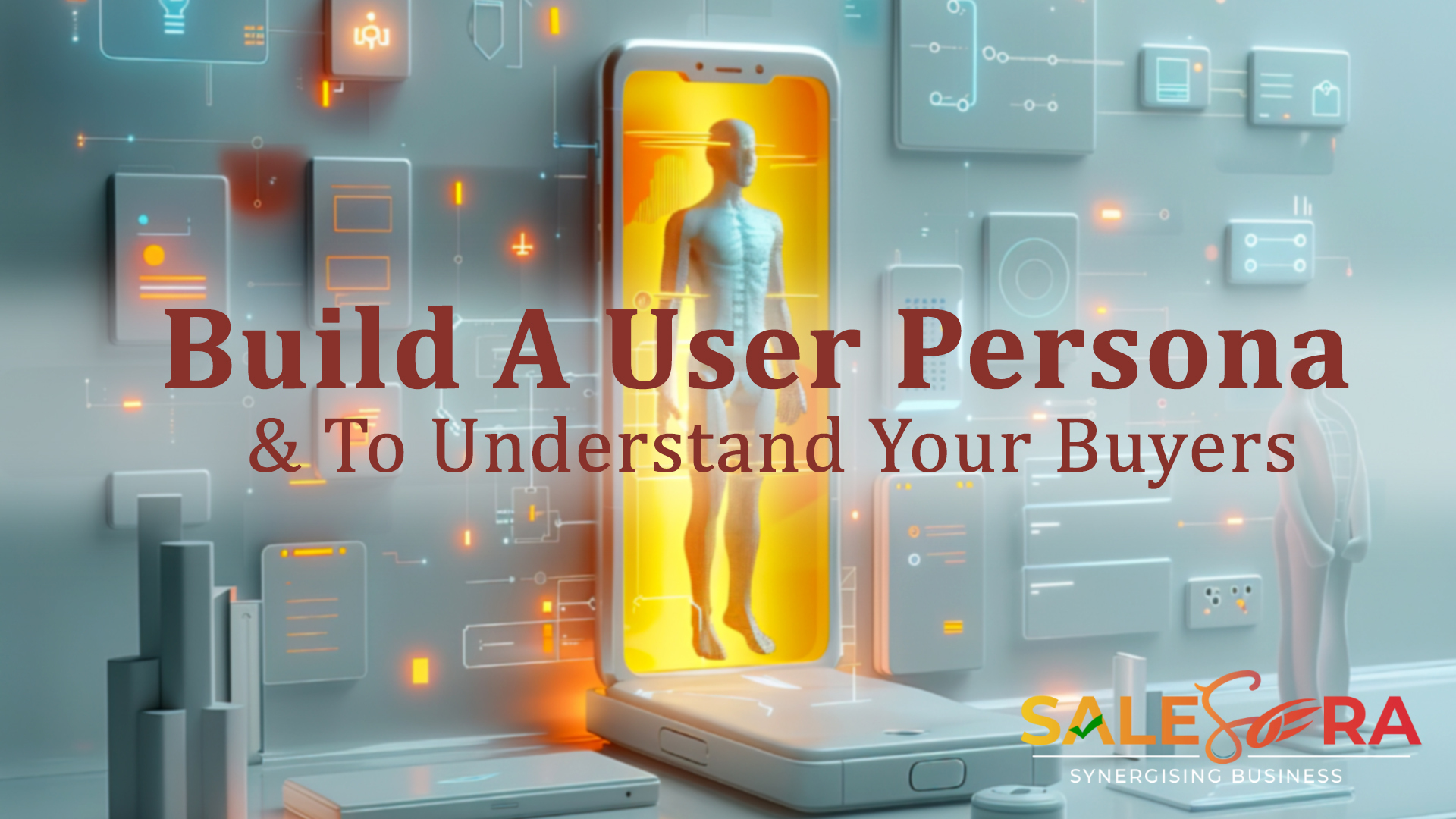Marketing without data is like diving without an oxygen tank. You might be able to stay in the water for some time but eventually, you will lose your breath. When marketing without current data analysis, your campaign may fit for short-term sales, but you will ultimately fall behind other businesses. This is because you need to have specific data to characterise your customer. Considering our generation, where diversity is a powerful notion, it is essential to understand your audience. It is a key to your successful marketing strategy. This is when the concept of a user persona becomes important.
According to Google Digital Marketing Course, User Personas are the foundation of effective digital marketing. They provide detailed information about the target customer, allowing your marketing team to focus on the right customer for a specific product. When your marketing efforts meet customers’ specific needs, desires, and behaviours, it is likely to be a success. We shall explore the importance of user persona in this blog. We will also be discussing how to outline the steps to build one and apply it effectively in your digital marketing strategies.
What is a User Persona?
A user persona is a fictional character that represents a group of users within a company’s target audience. Even though they are fictional, it has to be done with research, collected data, and customer pain points. User personas are widely used in User Experience (UX) Design, Marketing, Product Development, Content Creation, Sales, Customer Service, Healthcare, Education, Public Policy and Government, and Human Resources. This is to give you an idea of how important it is to have a user persona for both B2C and B2B Businesses.
How User Personas Help Identify Specific Customers
Since user personas are based on real data gathered through research, surveys, interviews and analytics, they accurately represent the target audience. Additionally, user personas are key to personalizing experiences, whether in product design, marketing or customer service. Personalization based on personas leads to more meaningful interactions and higher customer satisfaction. In digital marketing, personas are vital for creating target and effective campaigns. When the marketing team understand the specific preferences of their audience, digital marketing can enhance content strategy, improve customer journey mapping, and increase conversion rates. Hence, they are powerful tools across various fields with particular impacts on digital marketing.
Common and Uncommon Misconceptions
Common Misconceptions
Personas are the same as Demographic
- Misconception: Many people believe that personas are just demographic profiles that only represent age, gender, location, etc.
- Reality: While demographics are part of personas, they also include psychographics (values, attitudes, interests), behaviours, goals, and pain points.
One Persona is Enough
- Misconception: Some believe a single persona can represent an entire target audience.
- Reality: In most Businesses, user behaviours, needs and attitudes differ in so many ways which we can call diverse characteristics. Creating multiple personas for each key segment is necessary to address the diversity within the target audience effectively.
Personas are only for UX Design
- Misconception: Many people believe that personas are only useful for UX designers.
- Reality: Personas are valuable across various fields as I mentioned above in another section. They help different teams align their strategies with the needs of the target audience.
Personas are based on Assumptions
- Misconception: People assume that personas can be created based on intuition or assumptions.
- Reality: Effective and successful personas come from research and data. Relying solely on intuition can lead to inaccurate and unhelpful personas.
Personas are Static
- Misconception: Personas are seen as fixed and unchanging once created.
- Reality: Personas actually should be dynamic and regularly updated to reflect changes in market conditions, customer behaviour, and new research data. Having a stagnant persona can become irrelevant and misleading over time.
Steps to Building a User Persona
- Research and Data Collection
Researching is the key to precise information and gathering data is the first ever step in building a user persona. This includes demographic information such as age, gender, education, and location, as well as psychographic data, which covers your audience’s interests, hobbies, values and lifestyle choices. Here are a few methods and tools you can use for data collection in this process:
- Surveys and Qustionnaires
- Interviews
- Focus Groups (Ideal for understanding group dynamics)
- Observations Analytics and Behavioral Data
- Social Media Insights
- Google Analytics
- Identifying Pain Points and Goals
The next step is to identify your audience’s pain points and goals. Pain Points are the problems or challenges that customers face, while goals are the outcomes they are trying to achieve. When you try to understand these elements, your persona will accurately reflect your target audience.
For example, if you are marketing an application, your user persona’s pain point might include difficulty in UI/UX issues, Billing issues, or Customer Support. As for customer goals, they might be technical support or application updates every six months. Do not forget to comprehend their motivations, and what drives users to seek out your product or service.
- Creating a Persona Profile
With all the data and insights you researched in hand, it is now time to create a persona profile. This Profile should include a name, demographic information, a photo and a brief bio that summarises the persona’s key characteristics. You should also include the persona’s goals, pain points, and the channels they use to consume information.
Here is an example of the profile:
Name: Luke Arthur
Age: 35
Occupation: Digital Marketing Manager
Location: London
Pain Points: Struggling to keep up with the latest marketing trends, and managing multiple campaigns at the same moment.
Goals: Run his marketing efforts well, improve ROI on digital campaigns
Preferred Channels: LinkedIn, Marketing Blogs, Instagram

Checking the Finished Prototype
Before implementing your user personas, it is important to validate them. To do so, please share the prototype with your team and gather feedback. It is also essential to ensure that it accurately reflects the intended goals, addresses user needs, and functions as expected.
There are different layers to test the prototypes and here are some of the steps you must check out.
- Review for accuracy and completeness
- Test with stakeholders
- Evaluate functionality and Usability
- Align with User Goals
- Collect and Implement Feedback
- Final Review
- Document and Plan the next steps
Applying User Personas in Digital Marketing
After you have built your user personas, the next step is to apply them to your digital marketing strategies. Various aspects of digital marketing such as content creation, email marketing, social media marketing and paid advertising can be used when planning your digital marketing strategies.
Content Creation
User personas are mainly useful in content marketing. By understanding the needs and preferences of the audience, you can create content that aligns with them. For example, if one of the personas prefers articles on AI technology and industry trends, you can develop long-form blog posts or newsletters that aim at this preference.
Email Marketing
In email marketing, user personas can be a lot helpful in the segment of your customers’ email list and send personalized messages that fulfil directly each segment’s needs and interests. This level of personalization can significantly improve your open and click-through rates.
Social Media Marketing
When it comes to social media, user personas can guide your content strategy and help you choose the right platforms to reach your audience. For instance, if your persona is highly active on Instagram but not on Twitter, you should focus your social media efforts on Instagram.
Paid Advertising
Ultimately in Paid advertising, user personas can help you create targeted ads that are more likely to turn into sales or customer awareness and bring traffic. When you perfectly understand your audience’s pain points and goals, you can create ads that will directly speak to their needs.
Case Study
As a big company that is running a business with multiple fields, google sure has to use a lot of user personas not only in Digital Marketing but also in UX design and Interaction design. That is why Google is the prime example of a company that effectively uses user personas. They create detailed personas for their various user segments, which results in their marketing campaigns being effectively successful.
For example, Google’s personas might include small business owners looking for cost-effective advertising solutions and large corporations seeking advanced analytics tools. Empathy is their main point in creating personas which allow them to empathize with users and put their needs first. If you professionally want to learn digital marketing to know more about personas and their strategies, you can take a digital marketing course offered by Google on Coursera.
Link to Templates for Easy Use
To help you get started with building your user personas, here are some templates that you can use:
These websites offer a great starting point for creating detailed and effective user personas and they are very helpful for beginner marketers who are just starting.
Farewell of This Persona Journey
It is more crucial than ever to understand your audience in the dynamic world of digital marketing. User Personas are the gateways to helping you understand customers, which will help you develop marketing strategies that are more than individualized, focused, and successful. By Following the steps outlined in this article, you can build detailed personas and keep up with your specific audience. Whether you are new to digital marketing or already a professional, building and applying user personas will always assist you in understanding the audience and marketing more. SalesEra, a leading digital marketing agency can help you boost your reach and business with a robust marketing strategy. Subscribe to our LinkedIn newsletter SalesEra Spotlight for more such marketing insights.







